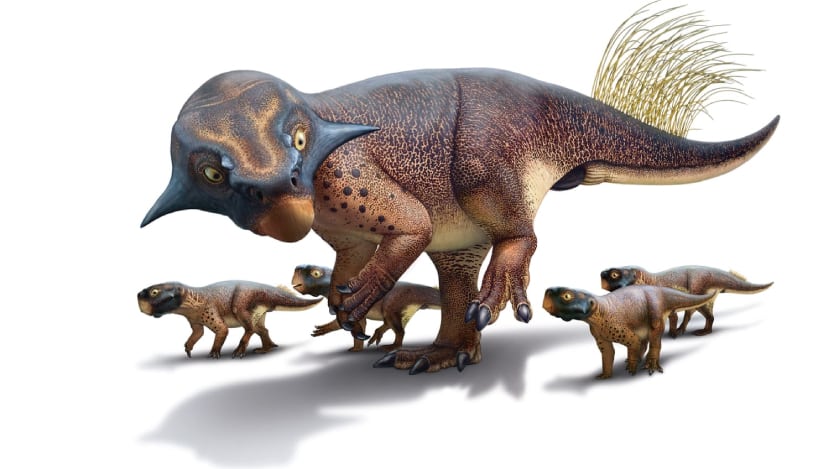Stunning sculptures to visualise the creatures who roamed Earth before man
Fri 26 Nov 2021
Crystal Palace Park, in south London, still hosts the world’s first dinosaur sculptures. They were created in the 1850s based on what was, at the time, very recent scientific discoveries: fossils, unearthed in England just decades earlier.
Scientists struggled to make sense of the creatures, and the sculptures were the first attempt to visualize them in true-to-life size. They were depicted like giant, mammal-like beasts, heavyset and four-legged — an already revolutionary idea compared to earlier ones that imagined dinosaurs essentially as huge lizards. But it was just as wrong.
We know today that dinosaurs did not look at all like the scaly versions at Crystal Palace. For decades, however, the sculptures, as well as many other subsequent depictions, inaccurately influenced the public’s view of these extinct giants. Renowned paleontologist Michael Benton’s new book, “Dinosaurs: New Visions of a Lost World,” however, offers the latest interpretation.
“It’s the first dinosaur book where the dinosaurs actually look like what they looked like,” claims the author, who worked with paleoartist Bob Nicholls to bring the creatures to life. “Every detail, as far as possible, is justified by the evidence. We tried to pick species that are quite well documented so that in the text, I can indicate what we know and why we know it.”
Much of the evidence comes from the most recent fossil discoveries from China, which starting in the 1990s, changed the way we interpret the appearance of dinosaurs. The 1996 discovery in the country’s Liaoning province of a feathered fossil, for example, created a direct connection between dinosaurs and birds.
“I think we can say that feathers originated way earlier than we had thought, at least 100 million years earlier, so right at the root of dinosaurs,” Benton said.
The idea that dinosaurs had feathers hasn’t appealed to everyone. Famously, the “Jurassic Park” franchise — which debuted in 1993 before feathery dinosaurs fossils were first discovered — has steadfastly refused to include them in its most recent films.
“They characterize that by saying they don’t want T-Rex to look like a giant chicken. But it’s a pity,” Benton said.
‘Ammonite’ and 5 more works about women overlooked by history
Even more recently, Benton and his team at the University of Bristol in the UK have pioneered away, by finding pigment structures embedded deep within the fossilized feathers, to identify the color patterns of a dinosaur from fossils. “We were the first to apply this method in 2010, so the book is documenting mainly studies from the last 10 years that looked at the skin, the scales, and the feathers in fossils — to get the color.”
That result is shown through illustrations of 15 creatures featured in the book — not just of dinosaurs but also prehistoric birds, mammals, and reptiles — adorned with vibrant skin patterns, an abundance of multicolored feathers, and some with striking iridescent heads.
Looking at these creatures shows just how much our knowledge of dinosaurs has improved, and how much it can improve still. A few years ago, I thought we would have never known about the color of a dinosaur, but now we do. Don’t draw boundaries, because sooner or later, a smart young person is going to say, ‘Hey, you guys, we can actually solve this one,” Benton said.
Source: Agencies

 Apr 26 2024
Apr 26 2024













